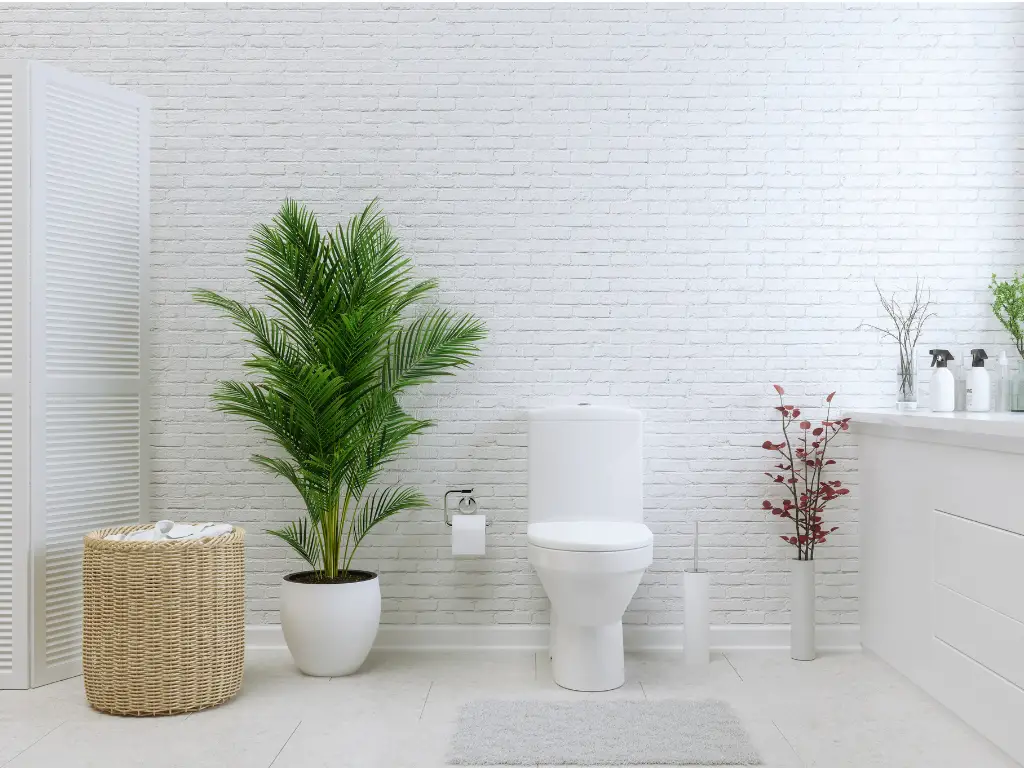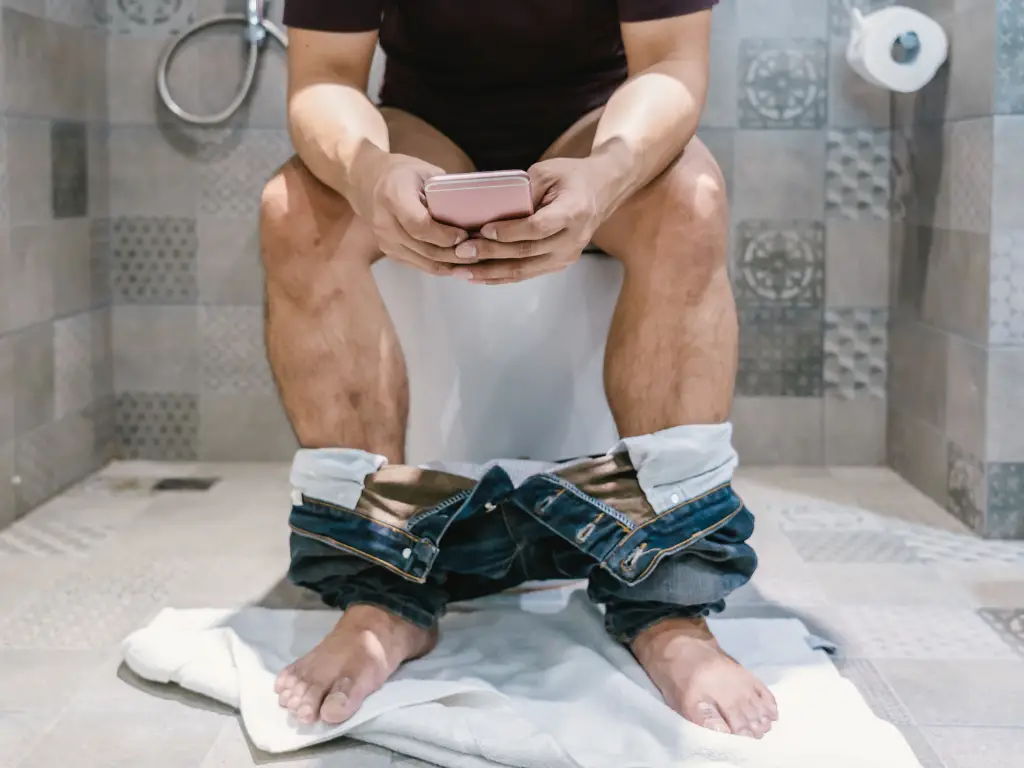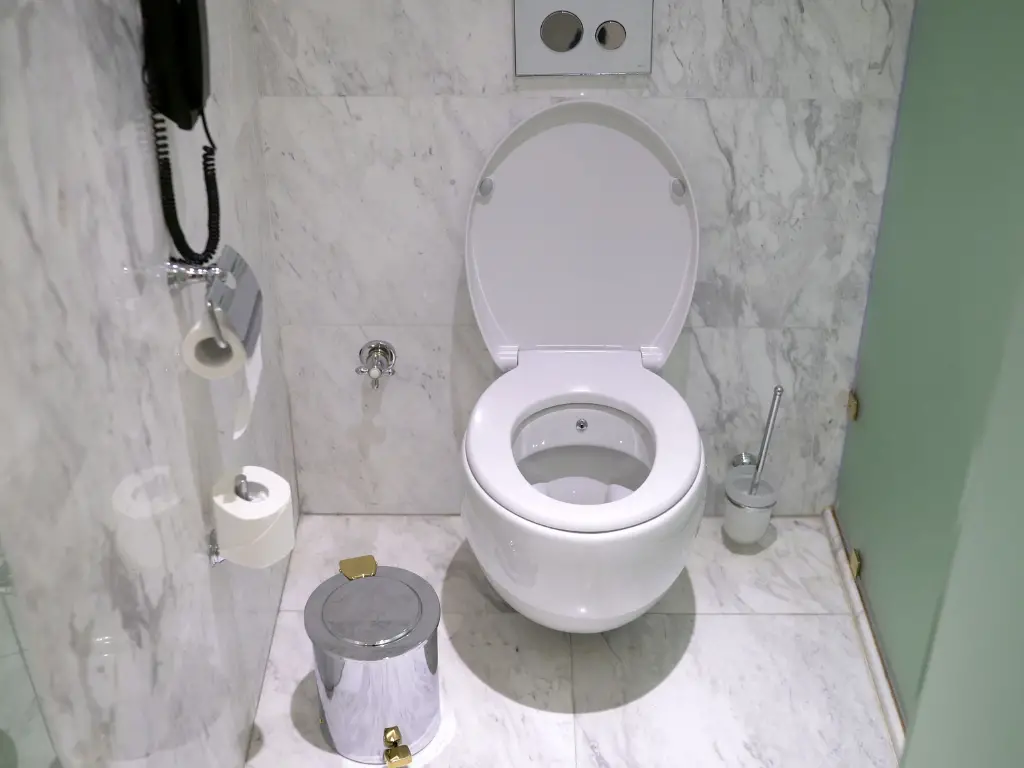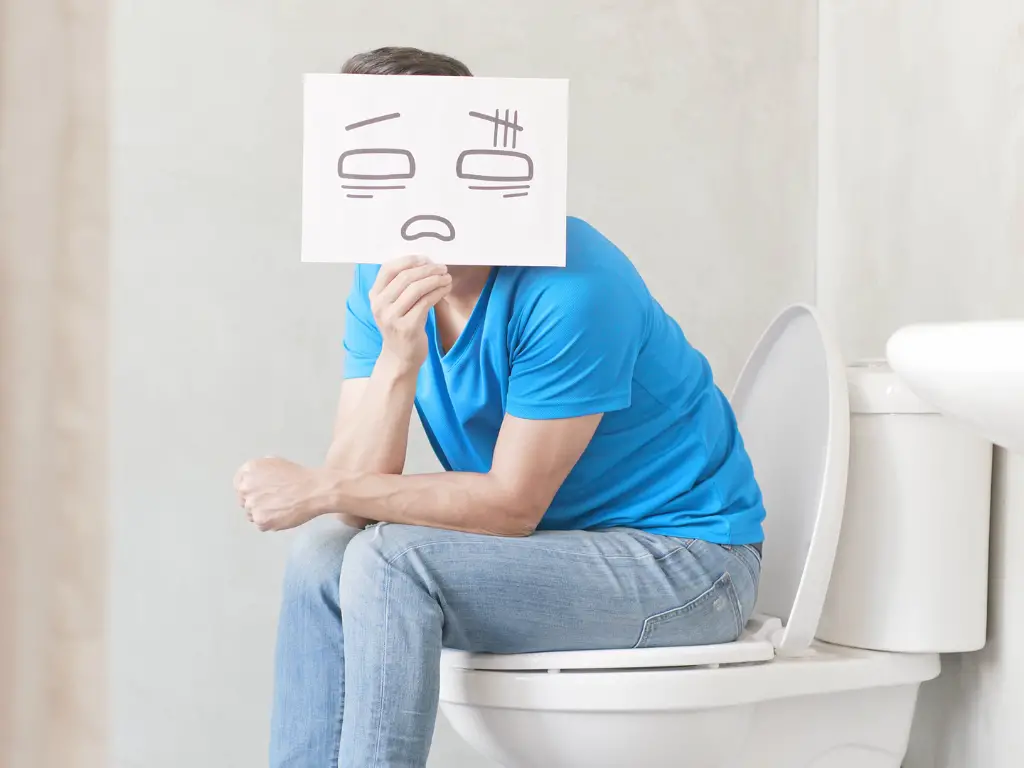Yes, Can You Use the Toilet When the Power is Out, but the ability to flush may be limited. Toilets don’t need electricity to function and rely on gravity to flush.
During a power outage, the sudden loss of electricity can impact various aspects of home life, but thankfully, the basic functionality of your toilet isn’t one of them. Toilets are primarily mechanical, not electrical, which means they continue to operate without power.
This independence ensures that in most situations, you can still flush after you use the toilet. However, for homes with pumps like in a basement bathroom or those that rely on well water with electric pumps, multiple flushes might not be possible without a backup power source. Understanding your home’s plumbing system is crucial during these instances to maintain sanitary conditions until the power returns.
Introduction To Bathroom Dynamics During Power Outages
When the lights go out, your bathroom’s reliability might come into question. As homes plunge into darkness, the silent question buzzes: Can you still use the toilet? Suddenly, the familiar becomes uncertain, and a basic need turns into a matter of concern and investigation. This piece shines a light on the often misunderstood realm of home plumbing during power outages.
Understanding The Impact Of Power Outages On Home Plumbing
Power outages often lead to confusion regarding the functionality of home plumbing systems. Your toilet might still work, depending on your home’s plumbing setup. Let’s dispel the darkness with some facts about how power interruptions affect your bathroom’s operations.
- Gravity-fed toilets will generally continue to function without electricity.
- Pressure-assisted toilets may operate differently if they depend on electrical pumps.
- Septic systems with electric pumps could cease to function, affecting toilet use.
- Sewer systems usually don’t rely on home electricity and should work normally.
Myths And Misconceptions About Power Outages And Toilets
Misinformation can spread as quickly as darkness in a power outage. Let’s clear up common myths and reveal the truth about using toilets when the grid goes down.
| Myth | Reality |
|---|---|
| Toilets won’t flush without power. | Most toilets, being gravity-fed, will still flush. |
| Flushing is unlimited during an outage. | Water may be limited due to inability to refill the tank. |
| You need to save water strictly for drinking. | It’s important but remember hygiene needs too. |
The Basic Mechanics Of Toilets
Losing power in your home can lead to many questions. One common question is about toilets. Can you use your toilet when there is no power? Let’s dive into the mechanics of typical household toilets to answer this question.
Toilets mainly rely on gravity to flush and refill. No power is needed for a basic flush. Here’s how a gravity-flush toilet works:
- You press the flush handle.
- This lifts a chain inside the tank, opening the flush valve.
- Water rushes down to the bowl, taking waste with it.
- The tank empties and the valve closes.
- A float triggers the refill mechanism as the water level drops.
- Water comes in to fill the tank again.
Water pressure in your pipes makes the refilling possible, not electricity. So during a blackout, regular flushing should still work.
In some homes, toilets have advanced features. These may need electricity:
- Electric water pumps in areas without gravity-fed water systems.
- High-tech toilets with bidets, seat warmers, or automatic lids.
- Touchless flush mechanisms that run on electric sensors.
| Feature | Electricity Required? |
|---|---|
| Electric Water Pumps | Yes |
| High-tech Functions (Bidets, etc.) | Yes |
| Touchless Flush Sensors | Yes |
For these types of toilets, a power outage may disrupt their functionality. However, a simple manual flush usually still works. Check your toilet’s manual if you’re not sure about its power needs.
Using Toilets Without Power: A Practical Guide
Unexpectedly, the power goes out, and a simple task becomes puzzling: using the toilet. Modern conveniences often require electricity, but toilets have an old-fashioned side too. They can work manually. Understanding how to use your toilet during a power outage ensures comfort and hygiene remain unharmed.
Step-by-step Guide To Flushing Manually
Flushing a toilet without power relies on manual water addition. Here’s how to do it:
- Gather water from a bathtub, rain barrel, or another source.
- Fill a bucket with at least a gallon of water.
- Pour swiftly into the toilet bowl to initiate a flush.
This manual approach can keep your toilet functioning even without electricity.
Precautions To Take When Power Is Out
While tackling toilet use during a power outage, safety is paramount. Follow these precautions:
- Avoid over-flushing to conserve water.
- Ensure water cleanliness before using it to flush.
- Check for sewer backup to prevent overflow.
Remaining mindful of these steps promotes sanitation and efficiency during power outages.
Alternative Solutions For Toilet Use During An Outage
Let’s dive into what you can do when the lights go out and your toilet won’t flush. Knowing alternative solutions ensures you always have a plan. This can be a vital part of your emergency preparedness. So, whether a storm takes your power or you are on a camping trip, these tips will help you manage.
Emergency Sanitation Options: Portable Toilets And Chemical Toilets
Portable toilets are a popular choice for outdoor events. They work well in power outages. They are self-contained units that you can set up anywhere in your home. Chemical toilets, on the other hand, use chemicals to neutralize waste. These are common in RVs and boats. They are perfect for longer outages.
- Easy to set up and use in any room or outdoor space
- No water required, so they’re perfect when service is down
- Deodorize waste, keeping smells under control
- Some models are flushable with a manual pump
- Cartridges can be sealed and disposed of safely
Managing Waste Without Flushing: Safe And Hygienic Practices
When you can’t flush, knowing how to handle waste safely is crucial. Following hygienic practices prevents the spread of illness. Line your existing toilet with a plastic bag if water service is still available. Use kitty litter, sawdust, or wood shavings to cover waste after each use. This method keeps odors down and makes for easy disposal.
| Material | Purpose |
|---|---|
| Heavy-Duty Bags | Contains waste securely |
| Absorbent Material | Reduces odors, adds bulk |
| Gloves and Hand Sanitizer | Keeps hands clean |
- Bag the toilet seat to create a makeshift toilet.
- Use a scoop of absorbent material after each use.
- Seal the bag after it’s full and dispose of properly.
- Clean hands with sanitizer after handling waste.
Water Supply Considerations In A Power Outage
When a power outage strikes, a question pops up. “Can I still use my toilet?” The answer usually boils down to your water supply and how it’s impacted. Let’s look at important aspects of water usage during a blackout.
How Power Outages Affect Water Pressure And Supply
Private wells need electricity to pump water, so no power means no water. City water users might notice lower pressure. Why? Because water treatment plants and pumping stations often rely on electricity to operate. Though some may have backup generators, prolonged outages could disrupt normal service.
Conserving Water For Essential Use During Power Interruptions
During outages, save water for necessary activities like drinking and hygiene. Here are practical tips:
- Fill bathtubs before the storm hits for flushing toilets.
- Collect rainwater if safe to use for non-potable purposes.
- Avoid using water for tasks like washing cars or watering plants.
- Store drinking water in clean containers for the outage duration.

Preparing Your Home And Toilet For Power Outages
Imagine it’s a stormy night, and the lights flicker before darkness takes over. Your power is out. Will your home, especially your bathroom, be ready for this? Most toilets don’t need electricity to flush, but when power outages happen, your toilet routine might still suffer. It’s crucial to prepare ahead of time. Here’s how to ensure you’re not caught off-guard when you need to ‘go’ during a blackout.
Tips For Toilet Preparedness Before A Power Outage Occurs
Don’t wait for the outage to hit before prepping your toilet; prepare now with these tips:
- Stock up on water: Fill bathtubs and jugs with water. You’ll need it for manual flushing.
- Check the tank: Ensure your toilet tank fills up properly and quickly after each flush.
- Have alternatives ready: Consider a portable camping toilet or a lined bucket with a tight lid for emergencies.
- Store extra supplies: Keep toilet paper, hand sanitizer, and disinfectant wipes in ample supply.
Maintaining Sanitation During Extended Power Outages
A lengthy outage tests your prep work. Keep your bathroom sanitary with these strategies:
- Limited flushing: Follow the “if it’s yellow, let it mellow; if it’s brown, flush it down” rule to save water.
- Seal off waste: Double-bag waste material. Label it clearly and dispose of it properly once services resume.
- Keep it clean: Regularly clean the toilet area with the stored disinfectant to prevent the spread of germs.
- Regular hand cleaning: Use hand sanitizer after each bathroom visit to maintain personal hygiene.
Understanding Sewer Systems And Power Dependencies
Power outages can be more than an inconvenience. They may affect how homes and buildings connect to sewer systems. It’s essential to understand how these systems operate in tandem with electricity and what happens when the power goes out.
How Sewage Systems Work With And Without Power
Most homes connect to two key types of sewage systems: gravity-based and those relying on electrical pumps.
- Gravity Sewer Systems: These systems do not need power. Waste travels down pipes using gravity.
- Pump Sewer Systems: These systems require electricity. Pumps move waste where gravity alone cannot.
Gravity systems work during outages. Pump systems fail without power.
The Risk Of Sewer Backups During Power Outages And How To Prevent Them
Sewer backups can be messy and unhealthy. Outages increase this risk, especially for pump-dependent systems.
Prevent backups with these steps:
- Reduce water use immediately after power loss.
- Avoid flushing toilets multiple times.
- Wait to take showers or do laundry.
Backup power like generators help pump systems. Check valves also prevent waste from re-entering.
Health And Hygiene Concerns With Toilet Use During Power Outages
The lights go out, and a flicker of worry crosses your mind: can I still use the toilet? The answer is, generally, yes. Toilets can be manually flushed when the power is out. But, there’s a catch. Health and hygiene become major concerns without the luxury of running water or electrically-operated sanitation systems. We must adopt certain practices to guarantee safety and cleanliness when a blackout turns our modern conveniences into challenges.
Preventing The Spread Of Disease Without Modern Sanitary Conveniences
Without power, water treatment plants may fail, and the risk of waterborne diseases escalates. To prevent the spread of illness, limit toilet use to solid waste. Conserve water by practicing the “if it’s yellow, let it mellow; if it’s brown, flush it down” rule. Always have chlorine bleach or disinfectant on hand. A simple mix of one part bleach to ten parts water can be used to sanitize surfaces if needed. Consider the following steps:
- Store extra water specifically for flushing.
- Keep a bucket handy to carry water for flushing.
- Use hand sanitizer after bathroom use.
Best Practices For Personal Hygiene In The Absence Of Power
Maintaining personal hygiene without electricity calls for ingenuity. Regular handwashing with soap ensures removal of germs and bacteria. If water supplies are low, hand sanitizer becomes your best friend. Opt for “dry shampoo” and wet wipes for a quick refresh. Keep these practices in mind:
- Stock up on wet wipes and hygiene products.
- Consistently use hand sanitizer when soap and water are scarce.
- Consider biodegradable options to reduce waste.
The Role Of Home Generators In Maintaining Plumbing Functionality
Imagine a blackout strikes unexpectedly. Your lights go off, the fridge stops humming, and your toilet flush system becomes a concern. Here, home generators emerge as heroes. These robust machines are critical in keeping your home’s plumbing in check during a power outage.
How Generators Can Keep Toilets Running During An Outage
Home generators supply the much-needed power to keep electric water pumps working. For homes with a well and pump system, this is vital. Even if you are on city water, some modern toilets use electricity for flushing. Generators ensure that these systems continue to function. It’s simple:
- Generator kicks in: It detects a power outage and starts automatically.
- Power to pump: The electric pump gets power and maintains water pressure.
- Flush as usual: Your toilet flushes normally, just like with regular power.
Safety Tips For Using Generators With Home Plumbing Systems
Ease of use comes with responsibility. Here are some key safety tips for pairing generators with home plumbing:
- Correct size: Choose a generator that fits your home’s energy needs.
- Proper installation: Hire a professional to ensure safe and correct setup.
- Ventilation is crucial: Place generators outside to prevent carbon monoxide poisoning.
- Regular maintenance: Keep your generator in top shape to avoid failures.
Remember:
| Do | Don’t |
|---|---|
| Read the manual: Understand how your generator works. | Backfeed: Never try to power your home by plugging a generator into a wall outlet. |
| Use heavy-duty extension cords: Ensure they are rated for outdoor use. | Ignore weather: Protect your generator from wet conditions. |

Case Studies: Power Outage Toilet Solutions In Action
Imagine a blackout hits your neighborhood. The lights go out, and so does the power for your home appliances. You may wonder, “Can I still use my toilet?” The answer is often yes, and we’ve got case studies to prove it. In this section, we’ll explore real-life scenarios where individuals used their toilets successfully during a power outage and share some valuable lessons learned from these experiences.
Real-life Scenarios Where Toilets Were Used Successfully Without Power
Bold lights may fail, but bathroom trips shouldn’t. We’ve collected accounts from homeowners who’ve tackled toilet use without electricity. These stories highlight resilience and practicality.
- City Apartment Dilemma: A high-rise dweller in New York manual-fill flushes the toilet with water from a bathtub reserve.
- Rural Home Resourcefulness: A country home in Ohio relies on a generator and stored water for their septic system during a storm.
- Suburban Family Prep: A family in Florida uses a previously filled flush tank and limits toilet use during hurricane-induced outages.
Lessons Learned From Past Power Outage Experiences
Adversity teaches invaluable lessons. Past power outages have provided key takeaways for homeowners regarding toilet usage.
- Always Be Prepared: Maintain a supply of water exclusively for toilet flushing in case of emergencies.
- Understand Your System: Know how your plumbing works. A gravity-fed system may not require power.
- Limit Usage: Conserve water and reduce flushing when power is expected to be out for extended periods.
- Consider Alternatives: Portable toilets can be a viable backup solution during prolonged blackouts.
Public Vs. Private Spaces: Toilet Use When The Power Is Out
Unexpected power outages can put a pause on everyday comforts. One vital question arises: how do we manage toilet use with no electricity? The answer differs between public and private spaces.
The Challenges Of Public Restroom Access During Power Loss
Public restrooms face unique challenges during power outages. Light and water supply often rely on electricity, making access and hygiene a cause for concern.
- No Lights: Safety risks increase in dark, unlit restrooms.
- Water Pressure Issues: Toilets may not flush, creating sanitation problems.
- Closed Facilities: Many public places might shut down completely.
Strategies For Managing Household Bathroom Needs During Blackouts
At home, the strategy is different. You can often still flush manually if your toilet isn’t electronic. Yet, consistent flushing may not be sustainable during a lengthy blackout.
Below are tips to manage your household bathroom needs.
- Fill Bathtubs: Store water for flushing toilets.
- Limit Use: Only flush when necessary to conserve water.
- Emergency Supplies: Keep disinfectants and hand sanitizers nearby.

Conclusion: Best Practices And Final Thoughts On Toilet Use During Blackouts
Power outages shouldn’t spell disaster for your bathroom needs. With smart planning and best practices, using the toilet without electricity is manageable.
Summary Of Key Points On Using The Toilet Without Power
- Manual flush: Fill your tank with water to flush manually.
- Extra water: Store extra water for flushing and hand washing.
- Portable options: Consider a porta-potty or chemical toilets.
- No sewer system: Don’t flush if you have a septic pump.
Emphasizing The Importance Of Preparedness And Adaptation
Being ready means peace of mind when the lights go out. Have a blackout kit with essentials like water containers and disinfectants. Understand the mechanics of your toilet and how to operate it without power. Adapt to the situation. It could be using a bucket or limiting toilet use. Safety and hygiene are vital. Keep your bathroom clean and avoid overflow.
Remember these best practices: Always have a backup plan for sanitation during a power outage. Be extra mindful of water usage when you cannot flush normally. Using biodegradable waste bags can be a temporary solution in emergencies. Periodically check your emergency supplies to ensure they are adequate and functional.
Frequently Asked Questions Of Can You Use The Toilet When The Power Is Out
Does A Power Outage Affect Toilet Flushing?
No, a power outage typically does not affect your toilet’s ability to flush. Most toilets use a gravity-fed system that doesn’t require electricity. As long as the water is running and the pipes aren’t frozen, flushing should work.
How Many Flushes Do You Get When Power Is Out?
If the water supply is unaffected, you technically have unlimited flushes even during a power outage. However, if water is pumped electrically and the outage impacts pumps, you may be limited to the water already in the tank after the power goes down.
Can You Manually Flush A Toilet During An Outage?
Yes, you can manually flush a toilet during an outage by pouring a bucket of water directly into the toilet bowl. This action mimics the toilet’s flush mechanism and clears the contents.
Should Toilets Be Avoided During A Power Outage?
Toilets do not need to be avoided during a power outage as long as water is available. Use your toilet as normal unless you’ve been advised that there’s a problem with the sewage system.
Conclusion
Wrapping up, power outages need not disrupt your bathroom routine. Most toilets will function without electricity, resorting to gravity for a flush. Always have an emergency plan, and remember, regular maintenance is key for uninterrupted use. Stay prepared, and never let a blackout catch you off-guard.

